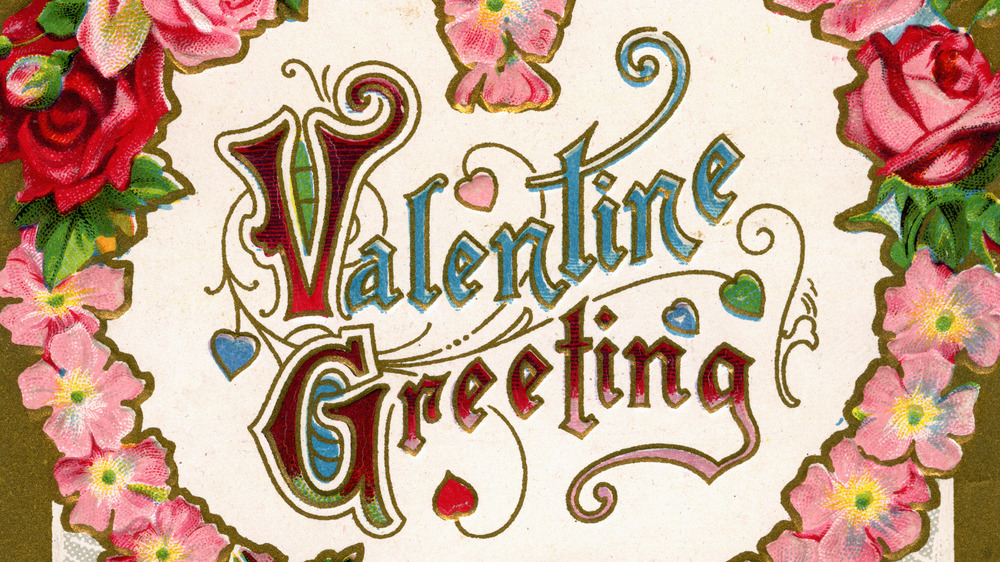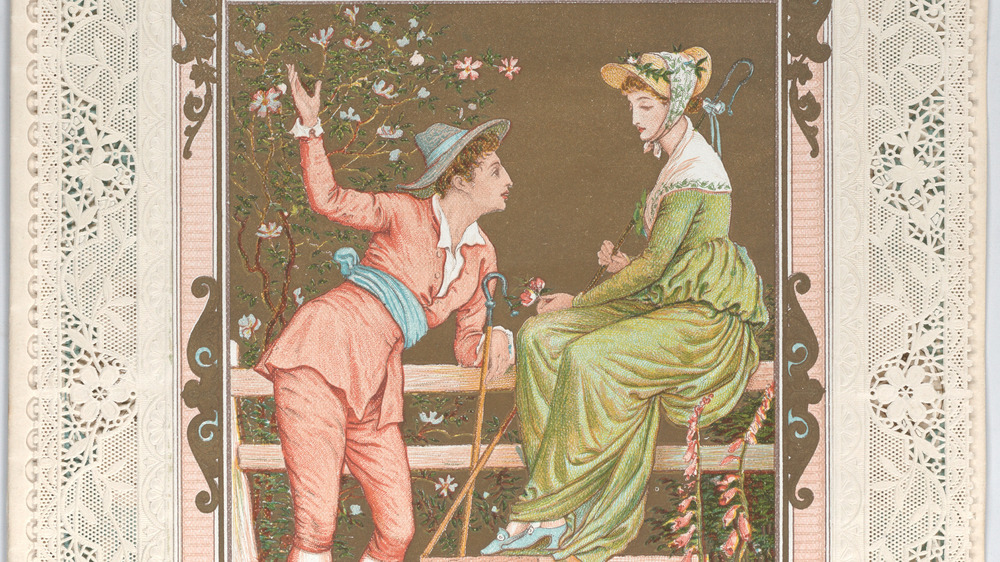The Real Reason Victorians Sent 'Vinegar Valentines'
There's a lot of discussion and worry around the relatively new phenomenon of online bullying, but even the analog social media of the Victorian era saw its fair share of mean and aggressive communication. Per History, these "vinegar Valentines" cards were originally known as "mocking or comic Valentines," and ranged from "a gentle jab to downright aggressive." Victorians really ramped up the craze for Valentines, making them one of the trendiest forms of communication and causing such an overflow of mail that mail carriers received "special meal allowances" to keep them on the job working to deliver the glut of Valentine's Day mail right up until February 14.
On the Brighton Museums website, University of Brighton lecturer Annebella Pollen estimates that up to half of the Victorian valentines delivered may have been of the vinegar variety. Pollen goes on to note that the cards' insults had "specific rather than general" aims and therefore a wide variety were available, featuring cruel remarks focused on everything from rejecting someone's romantic overtures (perhaps answering a sweet, sincere valentine with one more sour and satirical) to pointing out and mocking personal faults such as laziness, drunkenness, or vanity.
Anonymity was a possibility
Another "benefit" of sending vinegar valentines was the fact that they could relay negative messages anonymously. Perhaps similar to the way it can be easier for people to insult or threaten others online than it would be to do so in person — both parties are often hiding their full identities, while communicating virtually rather than face to face — it was traditional to send valentines unsigned. Furthermore, the cards' sentiments were often written using terms such as "we" and "everyone," as opposed to "I," suggesting that the targeted person's faults or negative qualities "w[ere] not only noticed by the anonymous sender, but also by the larger community." Vinegar valentines were an easy and effective method with which to bully and shame people from a distance with no fear of discovery, and no recourse for the recipient.
Brighton Museums goes on to note that fewer "vinegar valentines" have survived over time as compared to their more romantic counterparts. Postcard and valentine historian Frank Staff explains that fewer examples of the hateful cards exist in museum collections because their exchange was primarily performed by "the lower classes, and by a section of society unable to keep souvenirs of this type over the years." The article also points out that people were probably less likely to hang on to negative correspondence and press them in scrapbooks, unlike romantic or friendly cards. Their lack of presence in modern collections, however, doesn't lessen their importance within Victorian popular culture and society.

